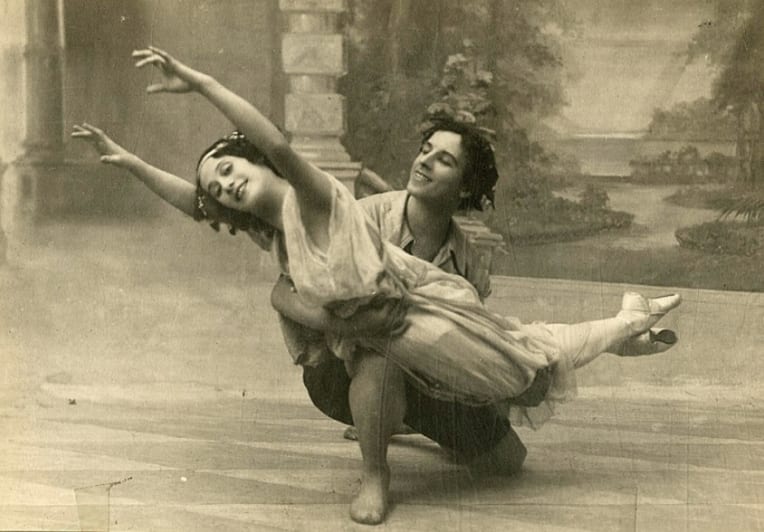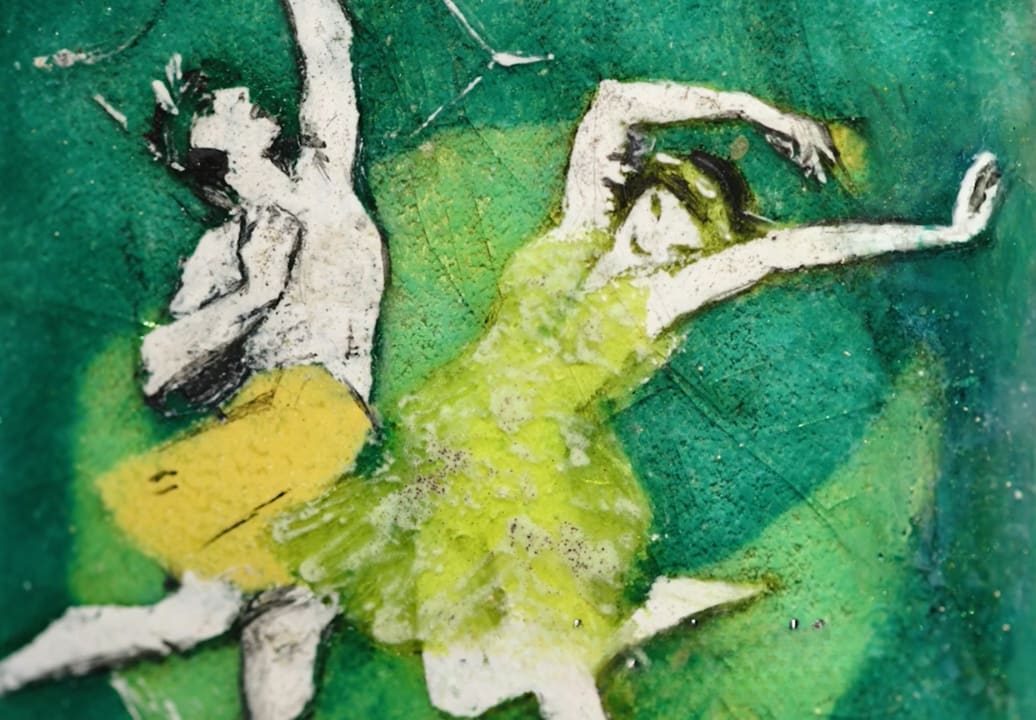Laura Knight & the Ballets Russes
By Cecily Daffern, Intern
Dame Laura Knight’s fascination with the Ballets Russes began with its first season in London in 1911 when it made a ‘sensational impact’ not just on beguiled audiences but also on the perception of theatre itself.[1] Knight, then living in Newlyn, Cornwall, would undertake the long journey up to London specifically to see this new and exciting spectacle.
The Ballets Russes is best understood as an amalgamation of all that was new, daring and performative in the early 20th century. Headed by the impresario Serge Diaghilev, its productions of ballet and opera were ground-breaking for the choreography and costume designs that became the foundation for its world-renowned status as the chrysalis of modern ballet. Ballets Russes’ performances were characterised by compilations of three or more short ballets and operas in succession. For example, in the 1911 London season the programme included highly stylized productions of Cléopatre, Les Sylphides, Giselle and Prince Igor.[2] For artists such as Knight, these productions revolutionised ballet, introducing themes of historical revival and Orientalism that mirrored current art movements and interests of the day.[3]
Knight’s passion for capturing both the on-stage and off-stage worlds of performers resulted in some of her most memorable and remarkable works. Knight herself observed in her 1965 autobiography The Magic of a Line that ‘I firmly believe the most valuable study I ever have had was in my attempt to draw the Ballet’.[4] This is particularly evident in Knight’s depictions of ballet dancers represented in two enamels Pavlova and Mordkin (c.1914) and Dancers of the Ballets Russes (c.1914) in collaboration with the Arts and Crafts jewellery designer Ella Naper. Knight met Naper when she and Harold moved to Cornwall in 1907. In 1914, when the painting of landscape had been restricted for matters of national security, Knight’s artistic practice was forced indoors from where Naper taught her the delicate, and often challenging, process of enamel design. Using this technique, Knight captured scenes that appear to be based off sketches she produced of the ballet. In Pavlova and Mordkin it seems that Knight was inspired by Pavlova’s 1911 Ballets Russes appearance, depicting her in mid-movement silhouetted against the dark form of dancer Mikhail Mordkin, creating a strong decorative motif.[5]

Anna Pavlova and Michael Mordkin in Valse Caprice, 1910 (C) University of Washington
In the work Knight captures Pavlova as Cléopatra wearing a horned headdress and Oriental-inspired costume. Behind her the black shape of Mikhail Mordkin offsets the highlights of Pavlova’s costume and the forms of highly stylised choreography. In the 1920s and 1930s when the Ballets Russes returned to London, Knight could be found backstage at nearly every show painting ballet dancer Lydia Lopokova and capturing fleeting moments as the performers moved in and out of character.[6]
In the words of Diaghilev ‘a work of art is not important in itself except as an expression of the personality of its creator’.[7] In this sense Knight’s depictions of the Ballets Russes can be understood not only as studies of other creatives but also a reinvestigation of her own understanding of a world in dramatic flux.
Our two enamels my Laura Knight, Dancers of the Ballets Russes and Pavlova and Mordkin are currently on view at the gallery as part of our London Art Week display, Four Women, For Centuries.
[1] Knight, The Magic of a Line (London: William Kimber, 1965), p.153.
[2] Royal Opera, Program for the Ballets Russes, 1911.
[3] Robert Bell, ‘Wild Dreams: Imagining the Ballets Russes’ in Ballets Russes: The Art of Costume, (Canberra: National Gallery of Australia, 2010), p.33.
[4] Knight, The Magic of a Line, pp.154-157.
[5] Knight, The Magic of a Line, p.154.
[6] Knight, The Magic of a Line, p.158.
[7] J. Acocella and S. Diaghilev, Diaghilev’s “Complicated Questions” in The Ballets Russes and Its World, (New Haven, Conn: Yale University Press, 1999), p.85.







